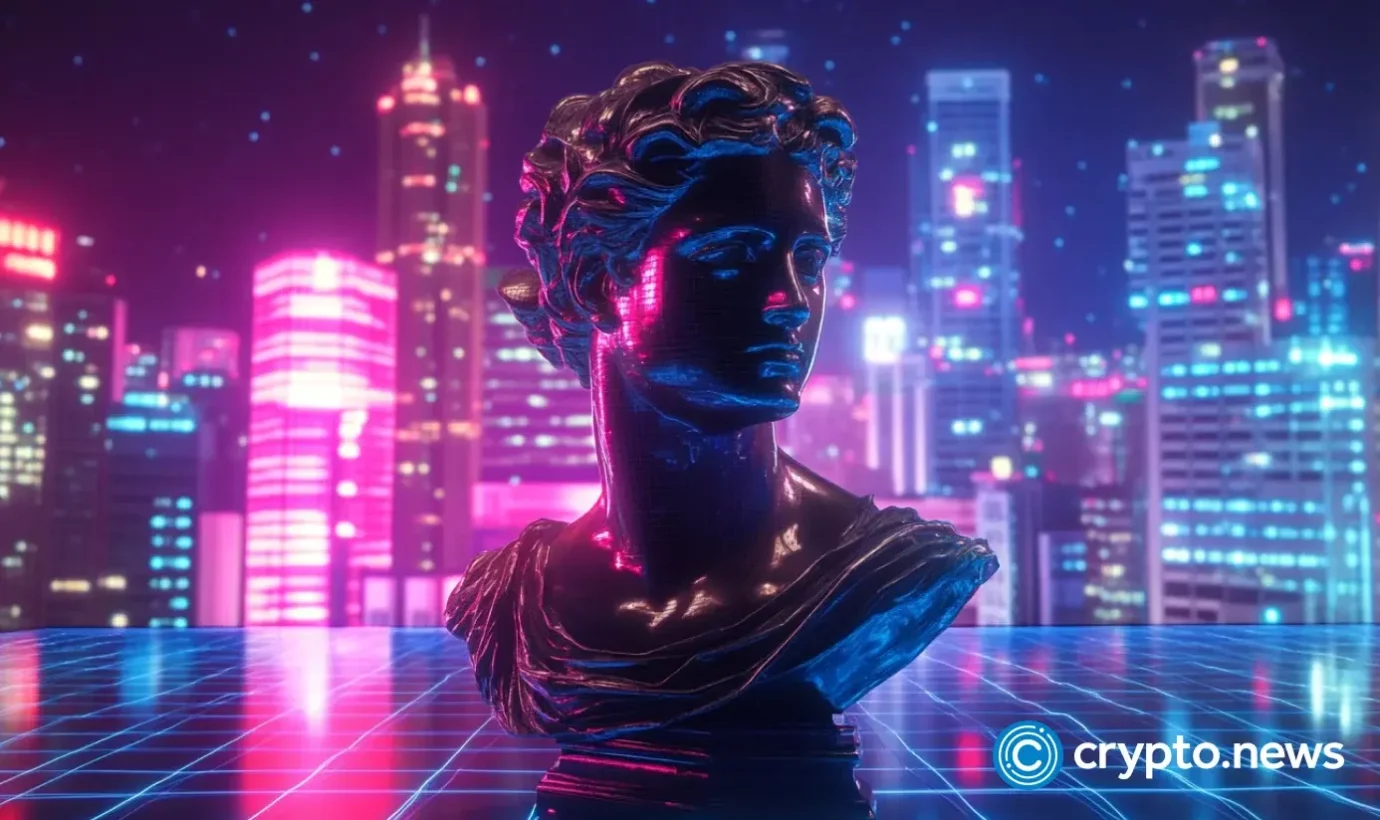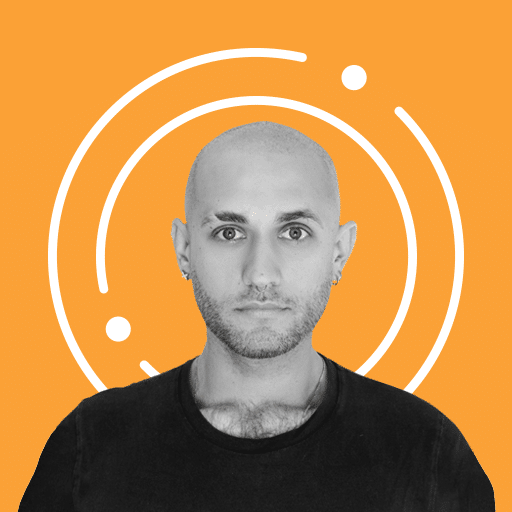Museums, AI-generated art, blockchain, and NFTs | Opinion

Disclosure: The views and opinions expressed here belong solely to the author and do not represent the views and opinions of crypto.news’ editorial.
Refik Anadol Studio, co-founded by Refik Anadol and Efsun Erkiliç in 2025, is launching an immersive AI art & NFT museum called DATALAND at The Grand LA, with a flagship location at the Frank Gehry-designed development in the heart of downtown Los Angeles.
DATALAND will feature immersive AI art experiences by establishing a new model for artistic expression at the onset of the digital age by taking immersion to the next level with the AI-powered scent of the galleries. As AI artist Refik Anadol explained to me:
“We aren’t yet revealing the details about DATALAND’s artistic programming, but there will be many moments for sharing/exhibiting AI artists’ work both physically and virtually so people who cannot travel to LA have access to the AI art creations. And can purchase the AI art work NFTs minted on an Ethereum-based platform and many other sustainable chains for exciting art and culture activities.”
Refik Anadol Studio announced the launch of DATALAND during Climate Week NYC, which is celebrated NYS-wide for the first time and runs parallel to the United Nations General Assembly meeting, where world leaders gather to address critical global challenges. DATALAND’s inaugural exhibitions will be prepared with the Large Nature Model, an open-source AI model based solely on nature data, to produce unprecedented immersive AI-powered digital environmental artwork. The studio initially presented such installations at the 2024 World Economic Forum in Davos, Switzerland, and then at the United Nations in New York during the 2024 UNGA to promote environmental awareness. As UN Under-Secretary-General Melissa Fleming concurred:
“Refik Anadol’s artwork is a testament to the beauty and fragility of our natural world. It’s a clarion call to world leaders: we must harness the power of technology [AI art & NFTs] and human ingenuity and agency to incite action to protect our planet before it’s too late.”
The award-winning studio has been engaged by leading tech companies, groundbreaking researchers, and cutting-edge thought leaders to produce projects that have been shown in more than 70 cities spanning six continents and experienced by millions of ardent fans. These exhibition venues include several United Nations Climate Change Conferences, MoMA, Centre Pompidou-Metz, Serpentine Galleries, National Gallery of Victoria, Venice Architecture Biennale, Hammer Museum, Arken Museum, Casa Batlló, Dongdaemun Design Plaza, Daejeon Museum of Art, and Istanbul Modern Museum. Nevertheless, Refik Anadol Studio, as explained by Refik, chose “Los Angeles as the perfect city to launch DATALAND, a forward-thinking, revolutionary museum in support of the fields to which I have dedicated my career: art, science, technology, and AI research.” And he continued:
“As LA has long been a city that looks to the future in art, music, cinema, architecture, and more, it feels natural to open DATALAND here. To have a permanent space for us to develop a new paradigm of what a museum can be—by fusing human imagination with machine intelligence and the most advanced technologies available—is a realization of one of my biggest dreams. To do so in a building designed by one of my heroes, Frank Gehry, is almost unbelievable.”
DATALAND will use millions of photos and other records from partner museums, including the Smithsonian and London’s Natural History Museum, to create its installations. “We already have three major collaborations with museums in the works and are very confident to join forces across the world,” added Refik.
History of AI art, NFTs, and museums
Christiane Paul, the digital art curator of Whitney Museum, who is “looking forward to learning more about DATALAND,” detailed the AI Art History at the groundbreaking symposium at Rhode Island School of Design’s “Debates in AI” held during April 11-12, 2024, that invited artists worldwide. She explained that AI art has a fascinating history that intertwines technology and creativity, and it continues to evolve, pushing the boundaries of what is possible at the intersection of technology and creativity.
Christiane Paul, curator of Digital Art at Whitney Museum, debates in AI art history
Early beginnings: 1950s-1970s. The roots of AI art can be traced back to early experiments with computer-generated art, where artists and computer scientists collaborated to create visual and abstract compositions using early computer algorithms. One notable example from this era is captured by the Whitney Museum’s exhibition curated by Christiane Paul with David Lisbon tracing the evolution of Harold Cohen’s AARON, the earliest artificial intelligence program designed to create drawings and paintings. AARON was first exhibited in 1972 at the Los Angeles County Museum of Art.
Advancements in algorithms: 1980s-2000s. During this period, algorithms and computing power advancements allowed for more complex and varied artistic outputs, and AI art began to gain recognition in academic and artistic circles.
The city of Los Angeles, which will become home to DATALAND, served as grounds for the Gray Area Foundation, a cultural incubator with a mission to cultivate, sustain, and apply antidisciplinary collaboration, back in 2002 to integrate art, technology, science, AI, and the humanities—towards a more equitable and regenerative future. This foundation moved its headquarters to San Francisco in 2005.
Deep learning revolution: 2010s. The advent of deep learning brought significant changes with generative adversarial networks and other machine learning techniques that enabled the creation of highly sophisticated and realistic artworks. AI art started to be exhibited in NFT form in galleries and museums and auctioned in prominent auction houses, raising questions about creativity and authorship.
In 2014, digital artist Kevin McCoy issued the first-ever art NFT.
Four years later, in 2018, Christie’s art auction house became the first auction house ever to offer AI artwork for sale. Christie’s also hosted its first Art + Tech Summit on the topic of blockchain. In June 2019, the second edition focused on artificial intelligence and art. Since then, blockchain, NFTs, and AI have been hot topics in the art world, intersecting unexpectedly. At the helm of digital curator Christiane Paul, Whitney Museum became an early collector of NFTs starting in 2018.
Mainstream adoption: 2020s. The increased availability of AI art tools to the general public has democratized the creation of AI-generated images. This era has also seen debates about NFTs, its market bubble and crash, copyright, the impact on traditional artists, and the ethical implications of AI in art.
In Germany, the Intelligent Museum—a practice-based research and development project at the ZKM | Center for Art and Media Karlsruhe and the German Museum—was backed by the Digital Culture Programme of the German Federal Cultural Foundation in 2020. It explores new paths of museum communication and outreach to connect the museum with current AI technologies, making it a place of experience and experimentation, a social space where art, science, technology, and public discourse come together. One of the best-selling AI-generated NFT artists exhibited at ZKM is a program called Botto, which is the brainchild of computer engineers and a German artist named Mario Klingemann in 2021 that creates AI art NFTs. Today, Botto has created over 75 NFTs that generated more than $3 million in revenue.
In New York City, the Museum of Modern Art—ahead of holding its first-ever AI Art Show curated by Michelle Kuo, “Unsupervised” by Refik Anadol—became the beneficiary of a major new endowment established by the William S. Paley Foundation to support MoMA’s ambitious goals in digital media and technology and to provide for new AI Art/NFT acquisitions. Henry Kissinger, Chairman of the William S. Paley Foundation at the time, stated:
“I know how deeply my friend Bill Paley cared about The Museum of Modern Art and with what devotion he dedicated himself to its advancement. With this initiative, the Foundation will honor his intention and continue his vision for MoMA.”
Nevertheless, MoMA has adopted a cautious approach to NFTs so far. Other than contributing data to algorithmically generated works by artist Refik Anadol and, in October 2023, announcing that it had acquired “Unsupervised” for its permanent collection, the museum has not been involved with other AI art or NFT projects.
In Singapore, curated by ArtScience Museum’s Deborah Lim and guest curator Clara Che Wei Peh, “Notes From the Ether” last year was an exciting and timely exhibition that offered a glimpse into the future of digital art with work by 20 artists: Memo Akten, Burak Arikan, Botto, Mitchell F Chan, DEAFBEEF Simon Denny, Harm van den Dorpel, Sarah Friend, Rimbawan Gerilya, Holly Herndon and Mathew Dryhurst, Tyler Hobbs and Dandelion Wistjo+kapi, Larva Labs, Jonas Lund, Ninaad Kothawade, Sarah Meyohas, Rhea Myers, Aaron Penne, Aluan Wang, Emily Xie. These artists work with the emerging technologies of non-fungible tokens and generative artificial intelligence to push the boundaries of what art is and what it could be.
The future of museums AI art and NFTs
Undoubtedly, over the past 40 years, the usage of AI-generated art has been on the rise, becoming all the more popular during the last ten years with the tokenization of art via NFTs, according to the Academy of Animated Art. As Vilas Dhar, President of the Patrick J. McGovern Foundation, explained:
“AI is not just a tool for innovation—it’s a force that can reshape how we see our planet, reconnecting us with the beauty and fragility of nature in ways never before possible. Refik Anadol’s brilliant vision allows us to use technology [AI Art & NFTs] to engage the senses and spark a deeper emotional connection to our natural world.”
During this year, many museums and more than 100 “immersive” institutions around the world are showcasing/purchasing AI art and NFTs on a large scale to massive audiences to exhibit the marriage of human imagination and machine intelligence, which includes Seattle NFT Museum, Guggenheim Museum, Mercer Labs, Museum of Art & Light and Iconic, Buffalo AKG Art Museum, Centre Pompidou, Tate Modern, PST Art: Art & Science Collide, which held at over 60 shows across Southern California, and many others.
Magda Shawon, co-founder of Postmasters Gallery in New York City, who works with the first NFT Artist Kevin McCoy, has been selling digital, AI-generated art to museums such as MoMA, the Metropolitan Museum of Art, and The Whitney Museum of American Art for over 20 years. She agrees with Vilas and Melissa’s sentiments about Refik’s impactful AI artwork:
“People don’t want to stop watching Refik Anadol’s AI Work when they sit in front of it. Refik’s work has an impact, but whether it is a trigger to create an enormous field of AI generative art, NFT sales is a big question.”
Digital art has been collected for as long as it has existed, but widespread adoption is still nascent. The tokenization of art via NFTs has helped the digital art world and the traditional art world integrate, leading to a burgeoning interest from museums, immersive institutions, collectors, auction houses, NFT markets, and galleries. The first NFT artist, Kevin McCoy, who created an art NFT back in 2014, is hopeful and supports Refik’s museum, AI art, and NFT initiative. He highlighted:
“I’m heartened by Anadol’s announcement of Dataland. He is leading by example both with his ‘ethical AI’ initiative and the commitment to the exhibition and preservation of AI and digital art that the museum represents. Within this context, the provenance provided by NFTs and blockchain-based records, more generally, can play a central role. This will be an important next step in the expanding use of this technology.”












